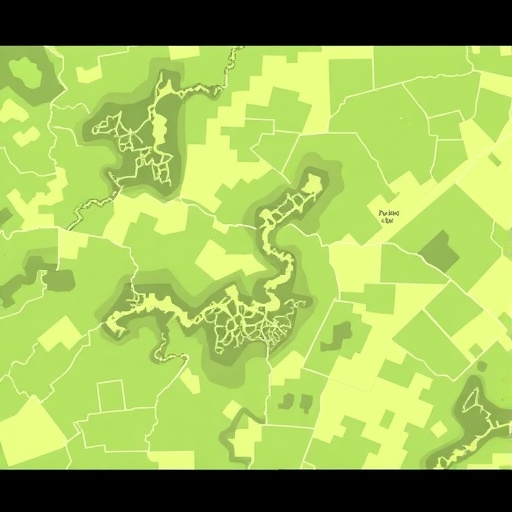In the rapidly evolving domain of environmental science, the accurate prediction of land use and land cover (LULC) changes has become a cornerstone for sustainable development and ecological conservation. Recent advances published by Wang, Hussain, Qaisrani, and colleagues in Environmental Earth Sciences have introduced a transformative approach employing the CA-Markov chain model to not only reconstruct historical LULC dynamics but also to forecast future scenarios with unprecedented precision. Their research, spanning extensive datasets and complex spatial analyses, offers a glimpse into the shifting fabric of terrestrial landscapes under the intertwined pressures of natural and anthropogenic forces.
Land use and land cover changes encapsulate a broad spectrum of transformations—ranging from deforestation, urban sprawl, agricultural expansion, to wetland drainage. Each of these modifications exerts profound impacts on ecosystem services, biodiversity, carbon cycles, and ultimately, climate regulation. Traditional methods of assessing these changes often relied heavily on remote sensing imagery and statistical interpretations, which, while valuable, lacked predictive robustness. The integration of Cellular Automata (CA) with Markov chain processes, as demonstrated in this study, advances both spatial and temporal resolution in modeling to new heights.
At its core, the Cellular Automata model simulates spatial dynamics by considering the influence of neighboring cells, effectively mirroring real-world interactions such as urban growth patterns or forest fragmentation. When combined with the Markov chain—a mathematical system that undergoes transitions from one state to another on a state space with probabilistic weights—the resultant hybrid model offers a dual lens. It elucidates the probability of land use transitions while preserving the spatial cohesion crucial to landscape realism. This synergy forms the backbone of the predictive framework designed by the research team.
The study first undertook a meticulous reconstruction of past land cover states by analyzing multi-temporal remote sensing datasets. This historical validation phase is critical, ensuring the model’s capability to retrace known transitions before extrapolating forward in time. Extensive calibration against satellite imagery and ground truth data was employed, providing the groundwork for credibility and accuracy. The authors highlighted that




